What is Relative Energy Deficiency in Sport (RED-S)? Cause, Symptoms and Treatment.
Relative Energy Deficiency in Sport (RED-S) is a syndrome affecting athletes whose energy output through activity and exercise exceeds their energy input through diet. RED-S may affect both women and men, and is generally characterised by an impairment in physiological function including:
Altered Metabolic Function
Decreased Muscle Strength and Endurance Performance
Decreased Coordination and Concentration
Decreased Glycogen Stores
Increased Risk of Injury, Infection and Illness
Increased Risk of Mental Health Conditions
Chronic Fatigue and Irritability
Anemia
RED-S: Signs, Symptoms and Diagnosis
Athletes affected by RED-S can experience any number of typical symptoms depending on their age, gender and lifestyle. RED-S is most common in sports that require low body fat percentage, such as cheerleading, diving, gymnastics, dancing and long distance running.
Typical symptoms may include:
Primary Amenorrhea, i.e. failure to commence menstruation by the age of 15.
Secondary Amenorrhea, i.e. the absence of three consecutive menstrual cycles.
Abnormal hormone levels for insulin, cortisol, growth hormones, gherkin, leptin, glucose, fatty acids and ketones.
Rapid weight loss and extremely low body fat percentage.
Eating disorders and fixation with diet and exercise.
Depression and Anxiety.
How does RED-S affect Athletic Performance?
RED-S affects athletic performance in a number of ways, including:
Deficient energy in through food leads to an inadequate carbohydrate intake, which can negatively impact progress and reduce training and event performance.
Protein synthesis is reduced, limiting an athlete’s ability to adequately recover from training in an expected or reasonable time period.
Anaemia limits an athlete’s oxygen supply to their muscles during training and events.
Risk of stress fractures is higher due to reduced reduced oestrogen and testosterone levels.
There is also a higher risk of illness due to a compromised immune system, leading to further unplanned time off from sport.
RED-S: Who does it affect and who is most at risk?
RED-S was previously known as the female athlete triad, believed to be a condition that only affected female athletes. Further studies have noted the prevalence of energy deficiency in male athletes engaging in low body fat percentage sports as well.
Athletes most at risk of developing RED-S include:
Weight-based sport athletes such as jockeys and boxers, and physique-based athletes such as gymnasts and dancers, for whom weight plays a major role in performance and event participation.
Adolescent athletes dealing with physiological changes of puberty whilst competing in their sport.
Athletes with eating disorders or disordered eating who likely already suffer from an energy deficit due to inadequate dietary intake and excessive exercise.
How do you treat RED-S?
The signs and symptoms of RED-S can be subtle, making screening and diagnosis challenging. Health professionals involved in care for athletes involved in high-risk sports should screen for RED-S and engage a sports dietitian for dietary assessment if any symptoms are present, such as:
Disordered eating or dramatic weight loss
Lack of growth or development (in adolescent athletes)
Menstrual cycle dysfunction
Recurrent injury or illness
Mood swings
Reduced or stagnant exercise performance
Sports Dieticians play a pivotal role in identifying and treating RED-S, however athletes affected by this syndrome require a team of experts to ensure effective treatment and recovery. Your Sports Dietitian will assess your dietary intake and exercise history to determine the underlying causes of your low energy levels.
As part of your assessment, your Sports Dietitian will refer you to a general practitioner to determine hormonal imbalances and assess bone mineral density. Other medical practitioners that may be involved in your treatment include a Sports Doctor or Physician, Exercise Physiologist and Psychologist. It’s also important to communicate your condition to those closest to you to build a network of support with your friends and family.
If you believe you may be affected by RED-S, please book a consultation with a Sports Dietitian as soon as possible.

